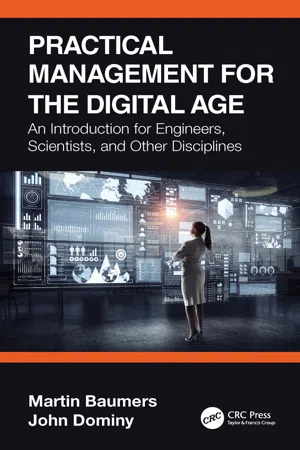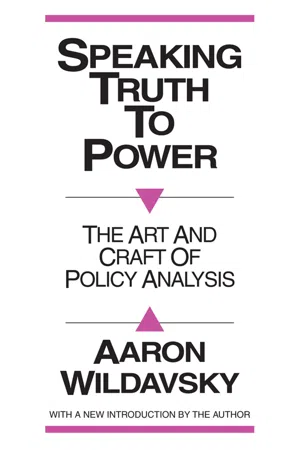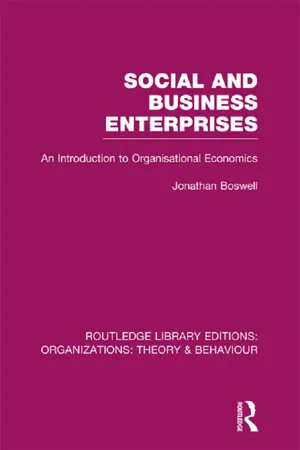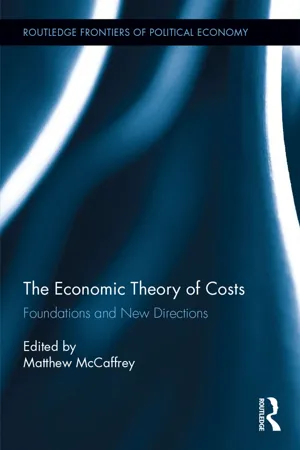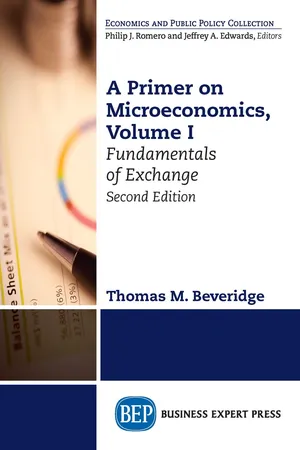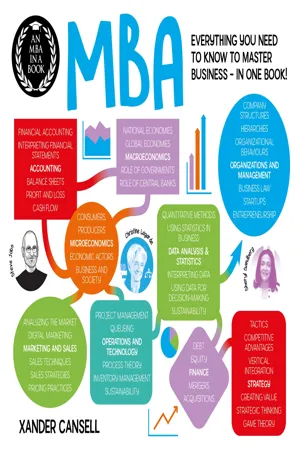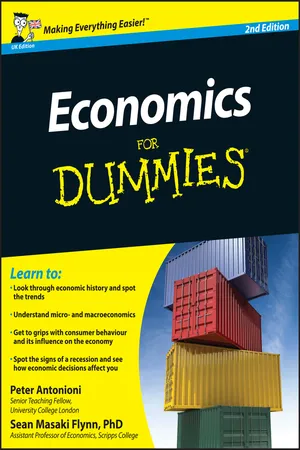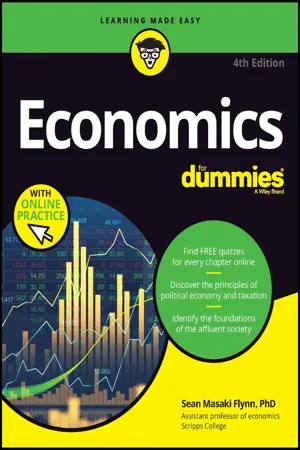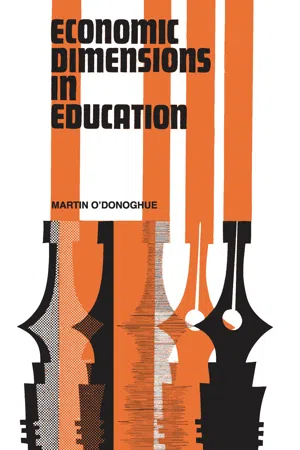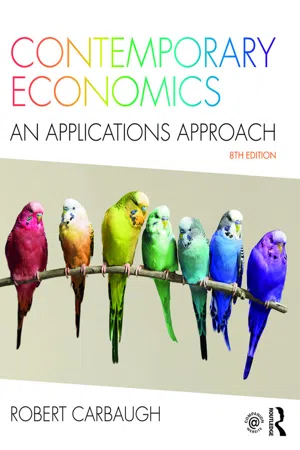Economics
Opportunity Cost
Opportunity cost refers to the value of the next best alternative that is foregone when a decision is made to allocate resources to a particular choice. It represents the benefits that could have been gained from choosing an alternative option. Understanding opportunity cost is crucial for making informed decisions about resource allocation and trade-offs in economics.
Written by Perlego with AI-assistance
Related key terms
Related key terms
1 of 4
Related key terms
1 of 3
10 Key excerpts on "Opportunity Cost"
- eBook - ePub
Practical Management for the Digital Age
An Introduction for Engineers, Scientists, and Other Disciplines
- Martin Baumers, John Dominy(Authors)
- 2022(Publication Date)
- CRC Press(Publisher)
trading off, one goal against another. That this is extremely important in everyday life can be seen when considering how individuals spend their time. For example, to be able to spend one hour studying, a student cannot spend this hour in the gym or earning money in a part-time job. In the same way, a household with a limited income must trade off buying different goods: money that is spent on clothing cannot be spent on dining out or going on holidays. At the level of society, an important trade-off is between improving efficiency by encouraging intensive competition between businesses and distributing society’s wealth more equitably among its members. Addressing this trade-off is an important recurring theme in politics.Principle 2: The Cost of Opportunity
The existence of scarcity and trade-offs implies that people frequently compare the benefit of one available option against that of another. While this is not always obvious, all individuals make such calculations on an ongoing basis. Economics adds clarity to this process of weighing options by introducing the concept of Opportunity Cost. Opportunity Cost is a particular type of cost that expresses the value† of the next best option given up, or forgone, by choosing a particular option, usually measured in money terms. It is defined as follows:† As an expression of the benefit or cost to an individual, Opportunity Cost is an expression of how useful something is and thus reflects use value.Opportunity Cost is the loss of not enjoying the benefit attached to the best alternative choice or course of action when one alternative is chosen.Opportunity Cost, therefore, reflects the value of the benefits forgone by not choosing alternative options.‡ Forgoing a very valuable option can create a high Opportunity Cost if a less valuable option is chosen, which is often a bad idea. Conversely, sacrificing an unattractive, low-value option for a higher value option incurs a negative Opportunity Cost. Using mathematical notation, the concept of Opportunity Cost can be expressed through the relationship between the return of the best forgone option BFO and the return of the chosen option CO - eBook - ePub
Speaking Truth to Power
Art and Craft of Policy Analysis
- Aaron Wildavsky(Author)
- 2017(Publication Date)
- Routledge(Publisher)
In the economy, to be sure, an economic loss ensues when values are not maintained. The market price can thus be viewed as an aid to calculation for the individual, in that it provides him with a clear alternative to his valued use of a good, an alternative he is certainly free to reject if it fails to meet his personal valuation. How free, of course, depends on his overall resource position, a personal consideration of little interest to theorists of economic markets, until, as we shall see, they enter the social realm.Opportunity Cost as the Best Indicator of WorthThus worth as forsaken alternatives is a crucial concept. Like price, it involves an interactive mode of analysis, it is competitive (and thus allows for the possibility of failure), and therefore it is broader and richer in evaluation than concepts of merit or utility, which are more subjective and hence self-protective. Opportunity Cost is also broader than price, for although we can speak of alternatives forsaken without reference to price (I think I'll go swim instead of taking a nap), we can't really think of prices without referring to alternatives (prices being derived from alternative offers in the market).As the individual starts to use market signals as part of his subjective evaluation (he may know that he wants a recording until he finds out that it is quite expensive), we begin to get at the concept of alternatives in a more objective or social sense, reflecting more widely agreed-upon estima-tions. And, continuing in this direction, we arrive at the primary value of economics as a social subject exclusive of any decisionmaker. Economics studies and estimates the best alternative use of resources that is foregone by any production decision. Though there are difficulties in calculation, the principle is unbending. Even Buchanan accepts this view, commenting that “cost is objective in any theory that involves genuine prediction.”40 - eBook - ePub
Social and Business Enterprises (RLE: Organizations)
An Introduction to Organisational Economics
- Jonathan Boswell(Author)
- 2013(Publication Date)
- Routledge(Publisher)
Chapter 5 Opportunity Cost In some ways the idea of Opportunity Cost is complementary to that of marginalism. Whereas marginalist reasoning in its useful modified form concentrates on keen adjustments and flexible improvements, Opportunity Cost reasoning is part of the very act of choice. Practical marginalism is essentially tactical but Opportunity Cost tends to be more strategically oriented, more critical and, in a sense, more radical. Of the two ideas it is also the more important. If marginalism in the pure sense is unattainable – and in the modified sense a matter of optional effort – Opportunity Cost is inescapable and perpetually pressing in on us, whether we like it or not. It is inherent in the whole human condition, fraught with triumph and tragedy. The critical question is whether we recognise it properly and apply its rationale with lucidity. DEFINITION AND TYPES OF Opportunity Cost Opportunity Cost is the value of the opportunity sacrificed, or the benefit forgone, as a result of not employing something in its best alternative use as seen by decision makers and/or society. James Buchanan expresses the contrast between historical and Opportunity Costs succinctly as a contrast between ‘choice influenced’ and ‘choice influencing’ costs. 1 In thinking about Opportunity Cost the key terms are ‘alternatives’, ‘relinquishment’, ‘sacrifice’ and ‘displacement’. Relating these to individual experience, we may say that the Opportunity Cost of saving money is the benefit from the spending abstained from or postponed as a result. The Opportunity Cost of depositing money in a building society is measured by the return anticipated from investing in, say, government stock or perhaps equities - eBook - ePub
The Economic Theory of Costs
Foundations and New Directions
- Matthew McCaffrey(Author)
- 2017(Publication Date)
- Routledge(Publisher)
1 Mises (1998) provides a complete exposition of the central place of human action in economic theory. See “The Procedure of Economics” (pp. 64–69) for a summary.2 Mises (1998): “Costs are equal to the value attached to the satisfaction which one must forego in order to attain the end aimed at” (p. 97). Rothbard (2009): “‘Cost’ is simply the utility of the next best alternative that must be forgone in any action, and it is therefore part and parcel of utility on the individual’s value scale” (p. 136).3 This conclusion is surprisingly uncontroversial. Consider, for example, Krugman and Wells (2009): “The concept of Opportunity Cost is crucial to understanding individual choice because, in the end, all costs are Opportunity Costs” (p. 7).4 As Mises (1998) explains: “Acting man is eager to substitute a more satisfactory state of affairs for a less satisfactory” (p. 13). This insight is particularly useful in solving apparent conundrums in the logic of action. For example, McCaffrey (2015) uses it to address a separate criticism of causal-realist theory regarding love and gifts: “in the universal, praxeological sense, it is not material goods that are exchanged, but rather states of the world, as subjectively interpreted by the actor” (p. 213).5 Rothbard’s (1956) “Toward a Reconstruction of Utility and Welfare Economics” is a seminal work in this literature.6 See Boyes (2014) for an example of how Opportunity Costs may be applied in a critique of the Keynesian multiplier.7 For other examples, see Acemoglu, Laibson, and List (2015, pp. 9, 12, 173), Chiang (2017, pp. 9, 36), Coppock and Mateer (2017, pp. 13, 35), Cowen and Tabarrok (2015, pp. 4, 17), Hubbard and O’Brien (2015, pp. 8, 39), Parkin (2015, pp. 9, 33), and Taylor (2007, pp. 5, 12).8 Consider, for example, the two definitions offered in Chiang (2017): “Opportunity Cost measures the value of the next best alternative use of your time and money, or what you give up when you make an economic decision” (p. 9, emphasis mine); and “Opportunity Cost – The cost paid for one product in terms of the output (or consumption) of another product - eBook - ePub
A Primer on Microeconomics, Second Edition, Volume I
Fundamentals of Exchange
- Thomas M. Beveridge(Author)
- 2018(Publication Date)
- Business Expert Press(Publisher)
Opportunity Cost is the value you place on the second-best option. The value of the option selected should exceed its Opportunity Cost; otherwise, you’ve not made a rational choice. It would be irrational to choose something less attractive and forgo a more desirable option. Note that our Opportunity Cost definition doesn’t refer explicitly to a financial cost. Even if a friend is paying the tab, it’s still not a free lunch for you because you are making choices. Choosing the New York strip means that you can’t choose your next-favorite option. THINK IT THROUGH: Consider your actions in the restaurant. You wish to make the “best” choice when you read the menu, but do you always choose the offering that is most appealing to you? Perhaps not. The relative prices of dishes may also have an effect. Sweet and sour chicken may not be as popular with you as shrimp lo mein, but if the chicken is on “special” or the shrimp is exorbitantly priced, then your selection may change. The Production Possibility Frontier The production possibility frontier (PPF) diagram can be used to depict choice and Opportunity Cost. A PPF diagram shows precisely what its name suggests—the frontier (or boundary) between what it is possible for us to produce and what it is not possible for us to produce, given the most effective use of our resources and our technology. We know already what our resources consist of (human resources, natural resources, capital, and enterprise), but what is “technology?” Technology is our method of combining our resources. If we develop a method of combining our resources that increases output, then this is a technological advance. A better crop rotation system or irrigation techniques in farming, or a more productive floor plan in a factory would be examples - eBook - ePub
An MBA in a Book
Everything You Need to Know to Master Business - In One Book!
- Xander Cansell(Author)
- 2023(Publication Date)
- Arcturus(Publisher)
For instance, if you were to offer the last sweet in the packet to your friend, you would be making a microeconomic decision – you would be deciding how to use a limited resource, the last sweet. To help understand this further, there is the concept of Opportunity Cost.Opportunity CostOpportunity Cost is not what you pay for a thing, but what you give up for a thing. It is the loss of potential value or benefits of the next best alternative when one thing is chosen over another. An example could be if you choose to spend your time and money going to the cinema; you cannot spend that same time at home reading a magazine, and you cannot use that money for something else. If your next best option were reading a magazine, then your Opportunity Cost is the money spent, plus the pleasure you gave up by not reading it. When economists talk about cost, they usually mean Opportunity Cost.Microeconomics looks at individual decisions such as these, but it is also concerned with the collective behaviour of these individuals, groups and companies (they tend to call these economic units ).To make the analysis of these economic units possible (rather than try to account for all the chaotic possible aspects of human behaviour in the real world) economists make two key assumptions about behaviour (this is called rational choice theory ):1. They are rational. They will always select the best choice available for themselves. 2. They seek to maximize the benefits they can gain from their opportunities.This second assumption comes from the fact that microeconomists have found that people are normally motivated to optimize even small, everyday decisions (i.e. buying the cheaper of two options), which they describe as the idea of marginal benefits .MARGINAL BENEFITS Marginal benefits are what are gained from consuming the next unit of a particular good.Marginal benefit (MB): The immediate positive impact of a particular decision to consume the next unit.Marginal cost (MC): The immediate negative impact of a particular decision to consume the next unit.When MB > MC, it is rational to select that option. When MC > MB, it is rational to reject that option. - eBook - ePub
- Peter Antonioni, Sean Masaki Flynn(Authors)
- 2010(Publication Date)
- For Dummies(Publisher)
is closely related to the idea of time constraints. You can do only one thing at a time, which means that, inevitably, you’re always giving up a bunch of other things.The Opportunity Cost of any activity is the value of the next-best alternative thing you may have done instead. For example, imagine you have three options: chatting on the phone with a friend, watching TV or concentrating on reading this chapter. If you choose to chat with your friend because that makes you happiest, we’re not going to hold that against you. We just assume that of the two things that you don’t choose, you consider reading this chapter to be better than watching TV. So the Opportunity Cost of chatting on the phone was sacrificing the chance to read this chapter.Opportunity Cost depends only on the value of the next-best alternative. It doesn’t matter whether you have 3 alternatives or 3,000. The Opportunity Cost is simply the value of the next-best alternative because you can always reduce a complicated choice with many options down to a simple choice between two things: option X versus the best alternative out of all the other alternatives.Opportunity Costs can tell you when notto do something as well as when to do something. For example, you may love ice cream, but you love chocolate cake even more. If someone offers you only ice cream, you’re going to take it. But if you’re offered ice cream or chocolate cake, you’re going to take the cake. The Opportunity Cost of eating ice cream is sacrificing the chance to eat chocolate cake. Because the cost of not eating the cake is higher than the benefits of eating the ice cream, it makes no sense to choose ice cream.Of course, if you choose chocolate cake, you’re still faced with the Opportunity Cost of giving up having ice cream. But you’re willing to do that because the ice cream’s Opportunity Cost is lower than the benefits of the chocolate cake. Opportunity Costs are unavoidable constraints on behaviour because you always have to decide what’s best and give up the next-best alternative. - eBook - ePub
Economics For Dummies
Book + Chapter Quizzes Online
- Sean Masaki Flynn(Author)
- 2023(Publication Date)
- For Dummies(Publisher)
As technology improves, people are able to produce more from the limited supply of resources on the planet. Or, put slightly differently, individuals have more and better choices as technology improves. In the past 200 years, people have figured out how to immunize children against deadly diseases, how to use electricity to provide light and mechanical power, how to build a rocket capable of putting people on the moon, and how to increase farm yields dramatically to feed more people. In just the past 30 years, the internet and cheap mobile phones have revolutionized everything from entertainment to how governments communicate with their citizens.Time constraints
Time is a precious resource. Worse yet, it’s a resource in fixed supply. Therefore, the best that technology can do for people is to allow them to produce more in the limited time they have or to grant them a few more years of life through better medical technology.But even with a longer life span, you can be in only one place at a time. Consequently, you only have a finite amount of time to work with. This means you must choose how to allocate your limited amount of time between leisure and labor, between taking time to do things you like and selling your time to employers so that you can earn wages to pay for things you want. This trade-off implies that time is a precious commodity requiring people to make serious choices.Opportunity Cost: The unavoidable cost
The economic idea of Opportunity Cost is closely related to time constraints. You can do only one thing at a time, which means that, inevitably, you’re always giving up other things.The opportunity cost of any activity is the value of the best alternative thing you could’ve done instead. For instance, this morning, I could’ve chatted on the phone with a friend, watched TV, or worked hard writing this chapter. I chose to chat with my friend because that made me happiest. (Don’t tell my editor!) Of the two things I didn’t choose, I consider working on the chapter better than watching TV. So the Opportunity Cost of chatting on the phone was not getting to spend the time working on this chapter. - eBook - ePub
- Martin O'Donoghue(Author)
- 2017(Publication Date)
- Routledge(Publisher)
A potential investment project, for example, may call for the expenditure of £100 now and in return it is expected to yield £105 one year from now, the rate of return on cost being then 5 per cent per annum. The expected returns exceed the costs, but before deciding that the project is worthwhile, the Opportunity Cost calculation will be made by comparing this return with some appropriate interest rate. If this interest rate is, say, 3 per cent the project will be worthwhile since the expected return of 5 per cent is greater than this. Similarly, if the relevant interest rate were 10 per cent the project would be rejected because of its inadequate rate of return The actual rate of interest (or, possibly more correctly, rates) which a business will apply for these calculations, is that which they can earn on funds by lending them, or which they must pay for borrowed funds. This market rate of interest, the price at which money may be borrowed or lent, measures the Opportunity Cost of a project because it reflects both the alternative investment and the alternative consumption uses of the required resources. It reflects alternative investment uses because the demand for funds will be based on the estimated profitability of all potential investment opportunities. Equally, it reflects alternative consumption uses because the supply of funds will be based on comparisons by lenders between the utility to them of spending now or of saving (which will permit higher future spending). Demand for funds is, then, a function of what is termed the productivity of investment, while supply is a function of what is termed time-preference between present and future goods. The conventional method of illustrating this process of interest determination is that given in Figure 3.1 - No longer available |Learn more
Contemporary Economics
An Applications Approach
- Robert Carbaugh(Author)
- 2016(Publication Date)
- Routledge(Publisher)
Entrepreneurship. This factor of production is a special type of labor. An entrepreneur is a person who organizes, manages, and assembles the other factors of production to produce goods and services. Entrepreneurs seek profit by undertaking risky activities such as starting a new business, creating a new product, or inventing a new way of accomplishing something. Bill Gates (founder of Microsoft Corp.), Levi Strauss (founder of Levi Strauss Co.), and Henry Ford (founder of Ford Motor Co.) are examples of highly successful entrepreneurs.These factors of production have a common characteristic: They are in limited supply. Quantities of mineral deposits, capital equipment, arable land, and labor (time) are available only in finite amounts. Because of the scarcity of resources and the limitation this scarcity imposes on productive activity, output will be limited.Limited resources conflict with unlimited wants. Human wants are said to be unlimited because no matter how much people have, they always want more of something. Because not all wants can be fulfilled, individuals must choose which ones to fulfill with limited available resources. In a world of scarcity, every want that is fulfilled results in one or more other wants remaining unfulfilled.Scarcity and Opportunity Cost
The reality of scarcity forces us to make choices that involve giving up one opportunity in order to do or use something else. For example, the cost of going to a Chicago Bulls’ basketball game includes the value of what is sacrificed to attend. Economists use the term Opportunity Cost to denote the value of the best alternative that is sacrificed. Part of the cost of attending a Bulls’ game is the price of the ticket. This price represents the other goods and services you could have purchased with that money instead. In addition, there is the most valuable alternative use of the time devoted to watching the game. Perhaps you could have used this time to study for an upcoming economics exam. Thus, the Opportunity Cost of attending the game equals the ticket price plus the difference in your test score that the additional study time would have yielded. Let us consider several applications of Opportunity Cost.economics IN Action
Frederick Smith: Entrepreneur
Frederick Smith, founder of FedEx, is one of America’s most successful entrepreneurs. He comes from a family tradition based on transportation. His grandfather was a steamboat captain, and his father established a regional bus company that turned into a cornerstone of the Greyhound Bus system. Learning to fly as a teenager, Smith worked weekends as a charter pilot while pursuing an economics degree at Yale University in the 1960s.
Index pages curate the most relevant extracts from our library of academic textbooks. They’ve been created using an in-house natural language model (NLM), each adding context and meaning to key research topics.
Explore more topic indexes
Explore more topic indexes
1 of 6
Explore more topic indexes
1 of 4
